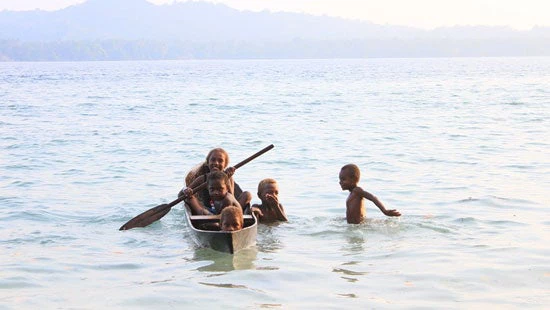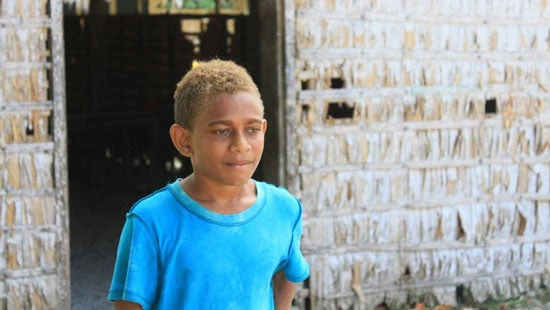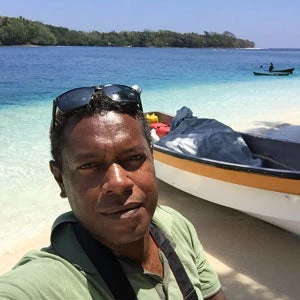
With the throttle at full tilt, the boat cut through the surf, spraying salt water into the air.
Around me, the unfolding scenery is breathtaking. White sandy beaches, turquoise blue seas, swaying coconut palms – the textbook image of paradise in the South Pacific.
What more could one ask for in paradise?
Water, is what they will tell you. “They” are the people of Nanngu Village on the island of Santa Cruz in the far east of Solomon Islands.
Out here, water to drink, cook food with, wash and keep clean is hard to come by.
The last time they had proper running water was 20 years ago. That came to an end at the hands of a Category Three cyclone, Nina, which hit the islands in 1993.
As I write this, we’re on our way to Nanngu to see a new World Bank-supported project bringing water to the village.
It’s been hailed a success, an example of effective development work, linking up the community with the provincial and national governments, the World Bank and donors who have supported the Community Resilience to Climate and Disaster Risk in Solomon Islands Project.
For me three things stand out. First is the place itself, Nanngu, its remoteness and natural beauty. The second is the people, community members who are benefitting from the project and the friendly, happy and entertaining personalities I met in my time here. The third is just how much of an impact a small scale project like providing water can have on a community.
One of the biggest challenges to development in the Solomon Islands is the remoteness of communities. Over half a million people live in dispersed communities in over 900 islands, across an area larger than France, Germany and Poland combined.
It’s not until you travel the two hour flight from Honiara, Solomon Islands’ capital, to the provincial capital of Lata, followed by a two hour ride in an open boat to Nanngu that you truly get a feel of the distance and how isolated communities are.
Considering Nanngu is well outside regular shipping routes, it’s no mean feat that this project was even able to get equipment and materials out here. The project team put it down to extensive planning, good timing and (luckily) good weather. And not least to the effort of countless community volunteers who gave their time, muscle and sweat to carry supplies uphill to the water catchment site.
Using innovative building techniques – such as stronger cement foundations, thicker concrete standpipes, and the use of steel pipes over PVC – the project is preparing the water supply system for extreme weather events and readying it to be used for many years to come.
Nature shapes life here in Nanngu. In the past decade alone this area has faced cyclones, droughts, earthquakes and, in 2013, a tsunami. For good measure, an active volcano, Tinakula, is a two hour boat ride away, a reminder of Solomon Islands’ location on the Pacific Ring of Fire.I’ve found that when you travel to remote areas, it often takes time for people to get used to your presence, to open up and share their lives with you and your camera. But in Nanngu, from the moment I stepped ashore, I was made very welcome and was regaled with more stories than I could possibly collect.
Despite (or maybe because of) the remoteness and their hardened life, life here is celebrated, spirits are high, the community is optimistic and forward looking.
Ever since that 1993 cyclone destroyed their water supply system, life in Nanngu has revolved around the need to find water, ration water and collect water again.
Villagers, mostly women and children, would walk many kilometers to get water, or even travel by canoe to a nearby island. That’s on a good day. On a bad day, Nanngu’s only school would shut down so kids could help their families find water for their homes.
Working in the development sector, the question one always asks is ‘who actually benefits on the ground?’ For this project, the answer to that question is clear:

For grade six student, Joseph Tika, a regular water supply means he is free to go to class, study and prepare for his dream job of becoming a teacher.

For Keziah Iwebu, it means being able to have water to prepare meals for her children. No more back breaking trips to fetch water.

Luke Nona, a former seaman and community elder, doesn’t have to wait until midnight anymore to use the lone tap to have a shower.
And in the community, access to water will allow them to be more resilient in the face of extreme weather events, natural hazards and impacts of climate change.


Join the Conversation